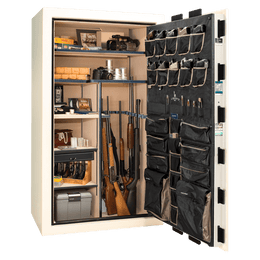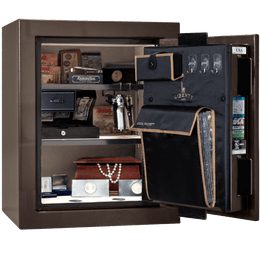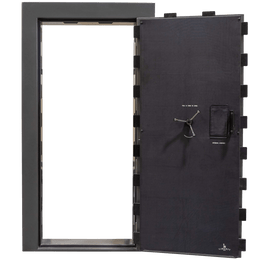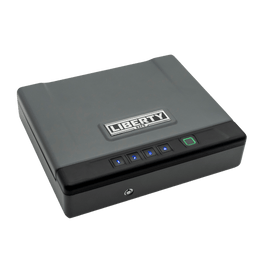Protecting Your Legacy: A Guide to Safely Storing Military Memorabilia
Military service is a profound chapter in the life of a veteran and their family. The keepsakes from that time—medals, uniforms, photographs, and documents—are not just objects. They are tangible pieces of history, sacrifice, and honor. Preserving these military heirlooms is a crucial responsibility, ensuring that the legacy they represent can be passed down through generations. However, time and environment can be harsh on these irreplaceable items. Proper heirloom storage is the key to protecting them from degradation, damage, and loss.
The foundation of any preservation strategy is a secure, controlled environment. A high-quality, American-made safe provides the ultimate defense against the most common threats, safeguarding your family’s history for the future.
The Enemies of History: Common Threats to Military Heirlooms
Before you can protect your memorabilia, you must understand what you're protecting it from. Several factors can cause irreversible damage to cherished keepsakes.
Environmental Damage
Humidity is one of the most insidious threats. It can cause medals to tarnish, paper to yellow and grow mold, and fabrics to mildew and rot. Extreme temperature fluctuations can make materials brittle, while direct exposure to UV light will cause photographs and documents to fade rapidly.
Fire and Water Damage
A house fire can destroy a lifetime of memories in minutes. Even items that don't burn can suffer extreme heat and smoke damage. Similarly, flooding or a burst pipe can lead to devastating water damage. This is why investing in a safe with certified fire protection you can trust is not a luxury, but a necessity for serious preservation.
Physical Damage and Pests
Improper handling, accidental drops, or being crushed in a cluttered attic can cause significant harm. Pests like moths, silverfish, and rodents are drawn to natural materials like wool, cotton, and paper, turning cherished uniforms and letters into their next meal.
Theft
The sentimental value of military memorabilia is infinite, and many items are truly irreplaceable. A secure, bolted-down safe is the most effective deterrent against burglary, keeping your personal history out of the wrong hands.
Selecting the Right Fortress: What to Look for in a Military Memorabilia Safe
Not all safes are created equal. When selecting a safe for heirloom storage, certain features are non-negotiable.
Certified Fire Rating
A safe's fire rating indicates how long its interior can remain below a certain temperature (typically 350°F, the point at which paper chars) during a fire. Look for safes that offer a minimum of 60 minutes of protection. For ultimate peace of mind, especially when storing delicate papers and photos, safes with longer fire ratings, like those found in the Colonial Series, provide superior defense.
Robust Security Features
Look for safes constructed from thick-gauge steel, with solid locking bolts and a reliable lock mechanism. A quality safe is an investment in security that protects against forced entry, ensuring your valuables remain where they belong.
Size and Interior Organization
Choose a safe that is larger than you think you need. This allows for proper organization and airflow, preventing items from being crammed together. Adjustable shelving is key to customizing the space for different-sized objects, from folded flags to archival boxes. Accessories like an interior LED light kit can make finding specific items easy without excessive handling. For those with smaller collections or limited space, a dedicated closet safe can be an excellent, discreet option.
Humidity Control
Even the best-sealed safe needs humidity management. A quality dehumidifier rod or desiccant canister is essential. This device will maintain a stable, low-humidity environment inside the safe, preventing rust, mold, and mildew from developing.
A National Trust: Preserving American Military History at Home
As a veteran or the family of one, you are the custodian of a unique piece of American history. The act of preserving these military heirlooms extends beyond family sentiment; it is a way of honoring the service and sacrifice that has shaped our nation. Each medal, letter, and uniform tells a story that contributes to the rich tapestry of our country’s military legacy. By taking the proper steps to protect these items, you ensure that these stories are not lost to time.
Choosing to protect your family's history is a significant decision. If you're unsure which safe is the right fit for your specific collection, taking a simple gun safe quiz can provide personalized recommendations to help you find the perfect balance of security, fire protection, and size for your needs.
Ready to Protect Your Legacy?
Your military heirlooms deserve the best protection available. Explore our range of American-made home and gun safes to find the ideal solution for preserving your family’s history for generations to come.
Contact Us for a ConsultationFrequently Asked Questions About Heirloom Storage
What is the ideal humidity level inside a safe for heirlooms?
For most mixed collections of paper, textiles, and metal, a relative humidity of around 50% is considered ideal. Using a hygrometer to monitor levels and a dehumidifier to maintain them is highly recommended.
Do I need a fire-rated safe for just metal objects like medals?
Yes. While metal won't burn, extreme heat can warp, discolor, and destroy it. Ribbons attached to medals are also highly flammable. A fireproof safe protects all aspects of your collection from heat damage.
Can I store old photographs and documents in plastic sleeves?
Only if they are specifically marked as "archival-safe," "acid-free," and "lignin-free." Common plastics can release chemicals over time that will accelerate the deterioration of paper and photos. Archival-quality mylar sleeves are the professional standard.
How should I prepare a uniform for long-term storage?
Have the uniform professionally dry-cleaned to remove oils and dirt that attract pests. Then, store it folded in an archival-quality box, using acid-free tissue paper to cushion folds and prevent creasing. Avoid storing it in plastic garment bags, which trap moisture.
Glossary of Preservation Terms
Archival Quality: A term for materials that are chemically stable and have a neutral or slightly alkaline pH. They will not degrade or release harmful chemicals over time, making them safe for long-term contact with valuable items.
Fire Rating: A certification indicating the duration a safe’s interior will stay below a specific temperature (e.g., 350°F) when exposed to a fire of a certain intensity.
Hygrometer: An instrument used to measure the amount of water vapor in the air, or the relative humidity, inside an enclosed space like a safe.
Steel Gauge: The measurement of the thickness of steel. In safe manufacturing, a lower gauge number indicates thicker, more robust steel, offering greater resistance to drilling and unauthorized entry.







